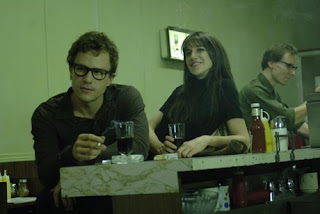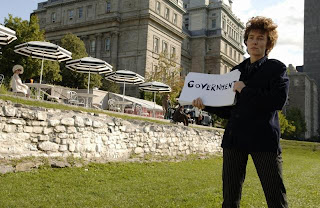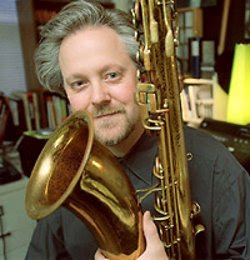 naturally came to look and review this one. As those who have read my previous posts, it is quite obvious that I am intrigued with Bob Dylan. Either if it was analyzing him in the context of authenticity, or weather it was speaking of him in the context of the folk revival and counterculture. I therefore wanted to take a look at this film again and view him from the various transitions he underwent publicly and relate it to the milieu of that given time. Haynes highlights this extremely well.
naturally came to look and review this one. As those who have read my previous posts, it is quite obvious that I am intrigued with Bob Dylan. Either if it was analyzing him in the context of authenticity, or weather it was speaking of him in the context of the folk revival and counterculture. I therefore wanted to take a look at this film again and view him from the various transitions he underwent publicly and relate it to the milieu of that given time. Haynes highlights this extremely well.As stated, I’m Not There daintily captures the mosaic personas of the iconic American folk singer/songwriter Bob Dylan. Reviewing the five decades of Dylan’s
 career, he has maintained the attention of popular culture (however not under tabloid gossip) and loyal and new following throughout the years. I guess I am just fascinated by his chameleonic personifications that he, maybe intentionally or not, put out into the public sphere. To some extent, this revealed him from being ahead of his own time, and for the rest of us who did notice, this sort of gave him some prophetic attributes.
career, he has maintained the attention of popular culture (however not under tabloid gossip) and loyal and new following throughout the years. I guess I am just fascinated by his chameleonic personifications that he, maybe intentionally or not, put out into the public sphere. To some extent, this revealed him from being ahead of his own time, and for the rest of us who did notice, this sort of gave him some prophetic attributes.This film captures six of Dylan’s most apparent transitions, portrayed in six characters. I take out that cause of these transitions was much larger than what it could be define in its literal terms, meaning that this could also be explained metaphorically. Because Bob Dylan moved so quickly especially in the first half of the sixties, a very particular decade of revolts, rise of consciousness, social upheavals, sociopolitical sentiments, and so on, it is that of which I look into the most. Though, each character represents a specific moment that is captured in his personas, the cultural impact of the time also had a reverberated outcome on him.
Throughout the film, the de facto narratives of a teenage Dylan as Arthur Rimbaud
 display concept driven representations which are full of symbolism. This can also be explained as how he challenges the work of Rimbaud as a poet which also mirrors him. Arthur’s role gives meaning to the insatiable and uncontainable energy displayed in the rest of the characters. It gives direction to these transitions.
display concept driven representations which are full of symbolism. This can also be explained as how he challenges the work of Rimbaud as a poet which also mirrors him. Arthur’s role gives meaning to the insatiable and uncontainable energy displayed in the rest of the characters. It gives direction to these transitions.Initially, when Dylan emerged into the scene, he had incorporated Woodie Guthrie into his persona, hence the name of the first character. This persona was seen through the music he played, the way he dressed, and the sensational stories he told
 of his origins which resembled an ideology of Guthrie’s, politically leftist and the attitude of a vagabond. The fact that “Woodie” was played by a young African American boy already incorporates the fabrication embedded in this character’s persona; it was like the elephant in the room. He manufactured stories like traveling and performing with a circus family and being brought up by many foster parents. However, he did sprinkle some truth here and there, like saying he lived in Hibbing, Minnesota, though he was actually born and raised there (that is the real life Dylan). Woodie’s selection of songs are old traditional songs outside his time. He is given a valuable suggestion to sing songs about his own time.
of his origins which resembled an ideology of Guthrie’s, politically leftist and the attitude of a vagabond. The fact that “Woodie” was played by a young African American boy already incorporates the fabrication embedded in this character’s persona; it was like the elephant in the room. He manufactured stories like traveling and performing with a circus family and being brought up by many foster parents. However, he did sprinkle some truth here and there, like saying he lived in Hibbing, Minnesota, though he was actually born and raised there (that is the real life Dylan). Woodie’s selection of songs are old traditional songs outside his time. He is given a valuable suggestion to sing songs about his own time. Consequently, the role of Jack Rollins shows an interesting precursor to the whole question of truth and authenticity being usurped at the time he arrived to Greenwich Village. He was called the “Troubadour of Conscious.” This storyline specifically
 depicts a PBS documentary style narrative with the reconstruction of “classic” still photographs and interviews of Alice Fabian who represents Joan Baez among others. The part of Rollins simulates the documentary by Martin Scorsese’, No Direction Home. We see how Rollins takes on a political mantle by singing songs in traditional form with contemporary concerns. Like in real life, this form of singing distinguished Rollin from the rest of his contemporaries who largely sung recollections of old, topical songs.
depicts a PBS documentary style narrative with the reconstruction of “classic” still photographs and interviews of Alice Fabian who represents Joan Baez among others. The part of Rollins simulates the documentary by Martin Scorsese’, No Direction Home. We see how Rollins takes on a political mantle by singing songs in traditional form with contemporary concerns. Like in real life, this form of singing distinguished Rollin from the rest of his contemporaries who largely sung recollections of old, topical songs. Next, we are introduced to Robbie Clark, the famous egotistical actor and unfaithful husband who made his debut with the film “Grain of Sand” in 1965 playing the lead
 actor within of the film within the film as Jack Rollins. His passion for wife Claire and infidelity are also a focus. Claire represents a mixture of Dylan’s two famous leading ladies. They are Suze Rotolo, who comes out on the cover of Freewheelin’ Bob Dylan (Claire is an abstract painter like Suze), but more evidently, Dylan’s first wife Sara Lownds, who were married for several years and had children together. Another Dylan character is Billy the Kid, representing when he hid away from the public sphere.
actor within of the film within the film as Jack Rollins. His passion for wife Claire and infidelity are also a focus. Claire represents a mixture of Dylan’s two famous leading ladies. They are Suze Rotolo, who comes out on the cover of Freewheelin’ Bob Dylan (Claire is an abstract painter like Suze), but more evidently, Dylan’s first wife Sara Lownds, who were married for several years and had children together. Another Dylan character is Billy the Kid, representing when he hid away from the public sphere.Jumping back to Rollins, he was already over what folk and political music could do and the direct effect it could have. Subsequently, he moved more towards an inward and poetically metaphoric work in his musical career. The film shows Kennedy’s assassination which could have marked a changing point in his psyche that later ushered into what was possible and impossible in terms of real political change through the protest song. Alice Fabian quotes Rollins saying that real change could not possibly be achieved through a song. This ushers into Dylan’s next point of his creative life.
Jude Quinn, played by a female, is shown performing at the New England’s festival, which embodies the famous 1965 Newport Festival performance. Here is when he gives up folk and goes electric. The instruments were shown as machine guns. It was as if he betrayed the folk immemorial and was shooting at his audience with the “raucous” music. A response to his drifting away from the folkies is shown in his song
 “Positively 4th Street.” His music had moved into this surreal landscape where urban sensibilities were clashing with the reminiscing sentiments of the folk era. There was also a great sense of surrealism and the obscured of popular culture collapsing onto intellectual and high culture. These new perceptions were evidently seen with the Beatniks, Allen Ginsburg, and Andy Warhol. A high modernist “surreality” was consequently reflected in the music of both Dylan, and the character Jude, during 1965 and 1966.
“Positively 4th Street.” His music had moved into this surreal landscape where urban sensibilities were clashing with the reminiscing sentiments of the folk era. There was also a great sense of surrealism and the obscured of popular culture collapsing onto intellectual and high culture. These new perceptions were evidently seen with the Beatniks, Allen Ginsburg, and Andy Warhol. A high modernist “surreality” was consequently reflected in the music of both Dylan, and the character Jude, during 1965 and 1966. During this moment, Jude, like Dylan, was constantly asked to explain why he had abandoned social and political causes by shifting from protest music to rock. “Ballad of a Thin Man” appropriately and metaphorically demonstrates the sentiments around this topic. It illustrates a journalist by the name of Mr. Jones. In this film he goes by Keenan Jones. In the actual song, Mr. Jones is not based on a specific character. However, it is based on the force that Quinn was on the run
 from. It was the force of being pinned down and of being asked to explain himself. It became a series of conflicts and show downs between Quinn and the press. Possibly his fear of being unmasked, and being asked what his intent as an artist suggested. Maybe a kind of intentionality that is close to the idea of being deceitful or being artificial, and to close to the idea of being reviled. Quinn bristles against all of this. He later is revealed as Aaron Jacob Edelstein, like the real Bob Dylan is revealed as Robert Zimmerman, both revelations as suburban, middle class, conventional characters. The fact is that both Quinn and Dylan are those who see a ‘truth’ of I may call it, in ways that nobody else is capable of. Furthermore and ultimately, they are those who refuse to be hurt and be put into a place of vulnerability. They refuse to be put in a place of being asked to define or defend their work or music. Dylan and Quinn are both surprisingly defensive, especially for someone who is in control of their creative abilities, and someone who intimidated the Beatles and Andy Warhol and is on the very top of their cultural game. As a whole, “Ballad of a Thin Man” represents the figure of the establishment, or that which the mass media forces to give any prescribed definitions to; any subject faces the danger of being represented as deceitful or sensational. This song is highly dramatized in the film. Quinn refused to be prescribed in any platform.
from. It was the force of being pinned down and of being asked to explain himself. It became a series of conflicts and show downs between Quinn and the press. Possibly his fear of being unmasked, and being asked what his intent as an artist suggested. Maybe a kind of intentionality that is close to the idea of being deceitful or being artificial, and to close to the idea of being reviled. Quinn bristles against all of this. He later is revealed as Aaron Jacob Edelstein, like the real Bob Dylan is revealed as Robert Zimmerman, both revelations as suburban, middle class, conventional characters. The fact is that both Quinn and Dylan are those who see a ‘truth’ of I may call it, in ways that nobody else is capable of. Furthermore and ultimately, they are those who refuse to be hurt and be put into a place of vulnerability. They refuse to be put in a place of being asked to define or defend their work or music. Dylan and Quinn are both surprisingly defensive, especially for someone who is in control of their creative abilities, and someone who intimidated the Beatles and Andy Warhol and is on the very top of their cultural game. As a whole, “Ballad of a Thin Man” represents the figure of the establishment, or that which the mass media forces to give any prescribed definitions to; any subject faces the danger of being represented as deceitful or sensational. This song is highly dramatized in the film. Quinn refused to be prescribed in any platform.Throughout all characters, the embodiments of Dylan dig into the abyss of the complex yet prophetic mind of this iconic individual. He has challenged what it is to decipher a song and what the meaning behind the music stands for, as it does not have an absolute definition. It is to value a song for what it is without giving it a literal meaning or a specific function, but to leave it in its pristine form.

